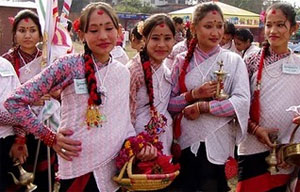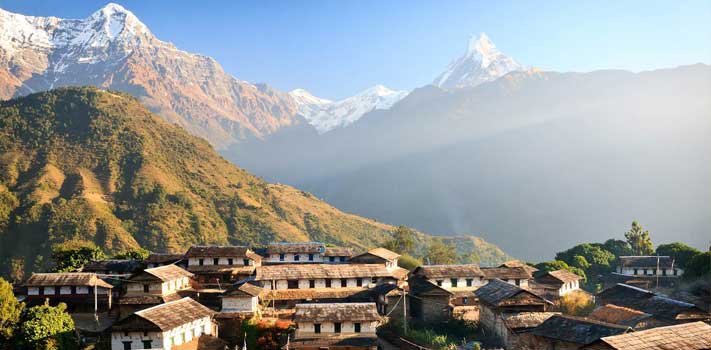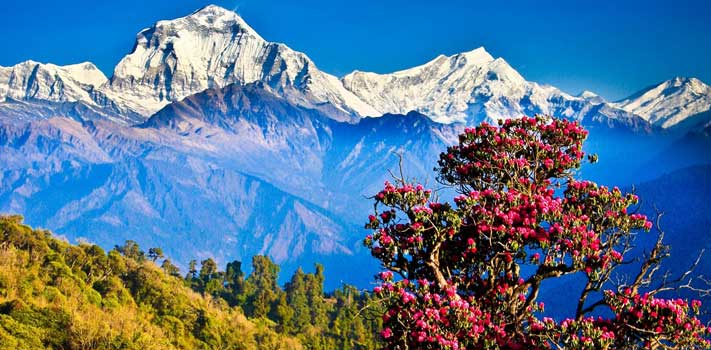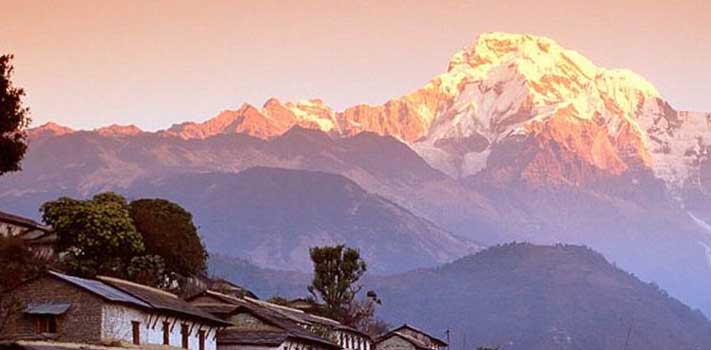About Nepal
- Kathmandu Durbar square :
- Patan Durbar square
- Bhakta pur Durbar Square
- Swoyambhunath Stupa
- Bouddhanath Stupa
- Changunarayan Temple
- Pashupatinath Temple
- Lumbini Garden
- Everest National Park (1148sq km)
- Chitwan National Park (932 sq km)
- Everest National Park (1148 sq km)
- Chitwan National Park (932 sq km)
- Rara National Park (106 sq km )
- Bardiya National park (968 sq km)
- Langtang national Park (1710 sq km )
- Shey Phoksundo National Park (3555 sq km)
- Khaptad National Park(225 sq km)
- Makalu Barun National Park and conservation Area (2330 sq km)
- Annapurna Conservation area ( 2600 sq km )
- Kanchanjunga Conservation area (2035 sq km )
- Manaslu Conservation area (1663 sq km )
| History |
| Nepal is a historical and ancient country.There are references about Nepal in early Hindu texts of Mahabharata and Puranas , as many sages used tovisit Nepal from Gangetic plain of India for spiritual actvities in the Nepal himalayas.Buddha was born in the city state of Lumbini in 500 BC in Nepal. The recorded history in Nepal starts from fifth crentury , the Changunarayan temple in Kathmandu dates back to the same period. The Lichhavi King Amsuvarma (602 AD)married his daughter Bhrikuti with the Tibetan king Shrong tsong Gompo and Buddhism travelled from Nepal to Tibet.The Buddha statues she brought from Nepal to Tibet are seen in Jokhang Temple of Lhasa even today. After the Lichhavis started the glorious Malla period from 12 th century onward and continued till 1768. Alll the great art and architecture of Kathmandu are from Malla period. During the Malla period, there were many tiny city states outside kathmandu, each with their own King and a stnding army.They were quarreling all the time.The British in India were trying to take advantage of this situation .It was in the same time that the King Prithvinarayan from Gorkha started to unify the country and the conquest of Kathmandu valley concluded the project in 1768. In 1846, in a bloody court massacre the then general Killed all the important figures of the state and took power from the king for next one century or more.They were the Ranas.Nepal remained closed to the outer world till 1950. In 1950 there was a popular revolt against the Ranas which toppled them and established democracy.Before democracy was well established it was now the King's turn to snatch the power ,he dismissed the parliament and elected prime minister .Neplase had to wait till 1990 to see democracy again.But soon after the democracy was restablished , there started a communist guerrilla war and which has just ended and we have now all party coalition government..Now the country is heading for a election to elect constituent assembly to make new constitution. |
| Geography |
| Nepal has such a topographical contrast that elevation ranges from 70 meters above sea level in Jhapa to world's highest mountain, Mt Everest 8848m above sea level. This extreme variation has given Nepal a varied eco system, both thick tropical and alpine forest swarmed with diverse wildlife, great peaks of the world, frozen valleys, deep gorges, thundering Himalayan rivers running down the hills and cool and calm lakes. Almost rectangular in size and landlocked between India and Tibet, Nepal is a small country measuring 1,47,181 sq km in area .Nepal is roughly the size of England with an rough average of 800km in length (east west) and 200km in width (north south). From the south to the north, Nepal can be divided into three main physical belts, each of which extends east to west across the country. |
| The Terai Plain |
| The Terai which is the extension of the Gangetic Plain forms the boarder with India.It is the home to Tropical flora and fauna,the fanmious wetlands and is a fertile land for agriculture.. The world famous Chitwan National Park is located in the Terai region. |
| The mid hills |
| The 2nd region lying north to the Terai is the mid hills of Churia and Mahabharat hill ranges. The Churia Range, which is sparsely populated, rises to an altitude of more than 1200 metres. The Kathmandu and Pokhara valleys come under this Mahabharat range. Between the Mahabharat range and Himalayas is another mountain ranges about 80 km in width and 2400m -4200m in elevation, this is the habitat of the famous Sherpas and Tamangs. |
| The Himalaya region |
| North to the mid hills lie The Great Himalaya Range, ranging in elevation from 4200 to 8848 metres and contains many of the world's highest peaks--Everest, Kanchenjunga I, Lhotse I, Makalu I, Cho Oyu, Dhaulagiri I, Manaslu I, and Annapurna I - all of them above 8000 metres. Except for scattered settlements in high mountain valleys, this entire area is generally uninhabited. Beyond the Himalayan ranges there are few Nepali villages like Mustang which are the ideal places to observe Tibetan culture in its intact form. In Nepal altitude generally increases as one travels from south to north. |
| Flora and fauna |
| Nepal has it all –tropical, temperate and alpine flora and fauna .The species of flora and fauna available in such a small country is really mind boggling. It is the only country in the world where you can see tropical animals like wild elephants, tigers, rhinoceros and also alpine animals like snow leopards and yak . Nepal is the home to 2% of all flowering plants in the world, 8% (848 species) of the total birds of the world (more birds than in USA and Canada combined), 11 of 15 butterflies families found in the world (500 species), 600 indigenous plant families and more than 300 species of orchid species.Many National parks and conservation areas are established to protect the habitat of these fauna and flora. |
| World heritage sites |
| There are a total of 10 world heritage sites declared by UNESCO in Nepal. Out of that the seven are in Kathmandu valley within a periphery of 30 km, which makes Kathmandu a unique destination, an open museum of art ., |
| World heritage sites (Cultural) |
|
|
| World heritage sites (Natural) |
|
|
| National parks and conservation areas |
|
|
| Conservation Area |
|
|
| Climate and clothing |
| While Nepal can be visited throughout the year, the best times are October through May. Activities like treks, climbing, rafting etc; undergo a temporary halt from mid June till September due to monsoon rains. Summmer is ideal season for trans himalayan treks like Upper mustang, Dolpo , Nar Phu valley and whole of Tibet.There is no rain in these rain shadow zones, it is warm and vegetations grow and flowers bloom.Cultural tours and short hikings can be done all the year round. |
|
|
Jan | Feb | Mar | Apr | May | Jun | Jul | Aug | Sep | Oct | Nov | Dec | ||
| Kathmandu | Max | ºC | 19 | 20 | 25 | 30 | 32 | 31 | 30 | 29 | 27 | 24 | 20 | 20 |
| Min | ºC | 1 | 4 | 8 | 11 | 16 | 20 | 21 | 20 | 19 | 15 | 8 | 1 | |
| Pokhara | Max | ºC | 20 | 21 | 27 | 31 | 32 | 31 | 30 | 30 | 29 | 27 | 23 | 21 |
| Min | ºC | 8 | 8 | 11 | 16 | 19 | 20 | 21 | 21 | 20 | 18 | 11 | 7 | |
| Chitwan | Max | ºC | 24 | 26 | 33 | 35 | 35 | 36 | 33 | 33 | 32 | 31 | 28 | 24 |
| Min | ºC | 7 | 8 | 12 | 18 | 20 | 23 | 24 | 24 | 22 | 18 | 12 | 7 | |
 PeopleThe large-scale migrations of Mongoloid groups from Tibet and Indo-Aryan people from northern India, along with aboriginal people , have produced a diverse linguistic, ethnic, and religious pattern in Nepal.. Most of the Tibeto-Nepalese groups, the Tamang, Rai, Limbu, Bhutia (including the Sherpa), and Sunwar, live in the north and east, while the Magar and Gurung inhabit west-central Nepal.The mid hills are inhabited by Bramhins and Chhertries.
PeopleThe large-scale migrations of Mongoloid groups from Tibet and Indo-Aryan people from northern India, along with aboriginal people , have produced a diverse linguistic, ethnic, and religious pattern in Nepal.. Most of the Tibeto-Nepalese groups, the Tamang, Rai, Limbu, Bhutia (including the Sherpa), and Sunwar, live in the north and east, while the Magar and Gurung inhabit west-central Nepal.The mid hills are inhabited by Bramhins and Chhertries. Almost all Nepalese live in villages or in small market centres.
Festivals
We often joke in Nepal that we have more festivals than days in a year.
Dasain, celebrated nationwide in October, is the most important of all Nepalese celebrations and features the biggest animal sacrifice of the year. Running a close second is Tihar (November), Other festivals celebrated nationally include the water-tinged Holi (March) and Chaitra Daisan (April), Hindu festivals number the Haribodhini Ekadashi (November) and Maha Shivaratri (March), both celebrated in Pashupatinath, the Gai Jatra (August) in Kathmandu and the Krishna Jayanti (August/September) in Patan. Buddhist celebrations are just as thick on the ground, and include Mani Rimdu (November) in Solu Khumbu, Buddha Jayanti (May) in Kathmandu, and Losar (Tibetan New Year) (February) in Swayambhunath, Jawlakhel and highland communities.
Language
Nepali is the official language. English is understood by majority of people in the cities. The country is a home of more than 60 ethnic groups & sup-groups and has over 70 different languages & dialects.
Religion
Hindus and Buddhists coexisted in Nepal for centuries in total harmony.There are about 2 % Muslims, 20 – 25% Buddhists and rests arre Hindus.Unlike in India the Hindus in Nepal are open and receptive to new ideas.Nepal is the birthplace of Lord Buddha and a country greatly influenced by Buddhism.In Upper Dolpo, Mustang and other regions you find few people still practicing ancient Bonpo religion.Shamanism is also popular in certain areas.
Lumbini , the birthplace of Lord Buddha is a world famous pilgrimmage site and attracts thousands of Buddhist pilgrims each year from China ,Korea , Japan, Srilanka, Myanmar and Thailand.Simillarly Pashupatinath is a great Hindu temple attracting a great no of pilgrims from India and abroad each year.
Econommy
Landlocked and without enough internal resources to develop infrastructure, Nepal is a poor and developing country. Majority of the people depend on the agriculture, tourism, in government jobs and employment abroad.
Industries are few and road networks and electricity are not adequate.The major sources of government revenue is the tax, the remittance from abroad workers and foreign assistance.
However the future of Nepal is not that bleak because Nepal is full of diverse potentials to support her 26 million population.Nepal's underdevelopement is mostly because of lack of education , remote land and feudal political system under the Kingship.Nepal is still trying to settle her politics.
If properly managed Nepal can very esily be self sufficient in food. Nepal's alpine slopes are a home to a number of medicinal herbes of great value.Nepal has immense potential for tourism with her unique products.Lying between two giant economies of China and India Nepal has a great number of opportunities to benefit from.Nepal's rivers are sources of 45000 MW(mega watt) of commercially produceable hydroelectricity.





